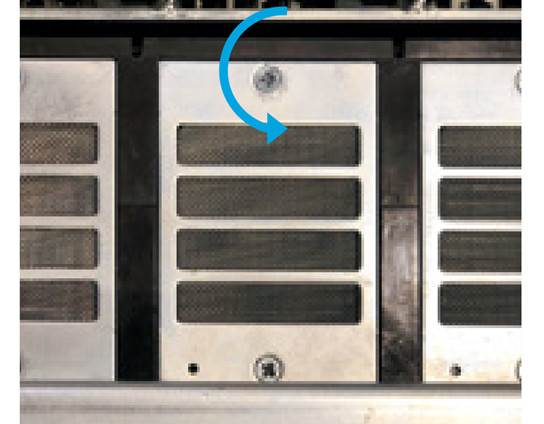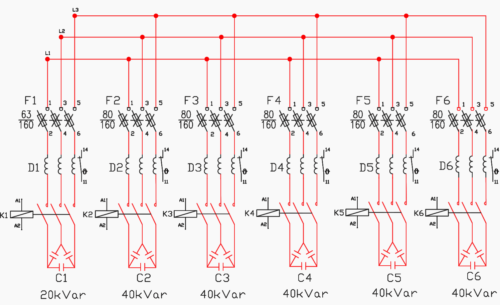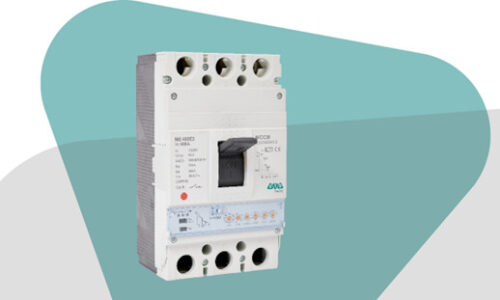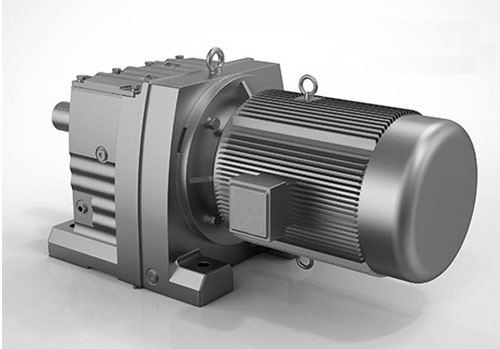
How does an air circuit breaker (ACB) work, and why can’t it be replaced by a normal breaker or fuse?
Air circuit breakers have open main contacts and are not sealed in a vacuum, oil or gas (SF6) bottle. They are primarily used in medium to low voltage applications and are capable of high amperage ratings. These types of switchgears have a charging spring that’s used to close the breaker and trip the breaker. Normally the charging spring is either hand cranked or motorized. Because the main contacts are spring loaded ACB’s can close at a much faster speed which reduces the arc that’s created during opening and closing of the breaker, this preserves the integrity of the main contacts and reduces overall maintenance. Air circuit breakers use a magnetic blowout arc chute that extinguishes the arc produced when opening the main contacts, because of this they are less likely to cause fires or explosions. ACB’s are used in very specific applications requiring higher trip settings, usually in a power distribution environment. Using fusible links or standard fuses wouldn’t provide the flexibility of a high speed switchgear like ACB’s, you can’t dial in and adjust the trip settings of a fuse, you can’t auto-reclose a fuse remotely, fuses have to be replaced, the only advantage a fuse has over air circuit breakers is maintenance, fuses do not require periodic maintenance.
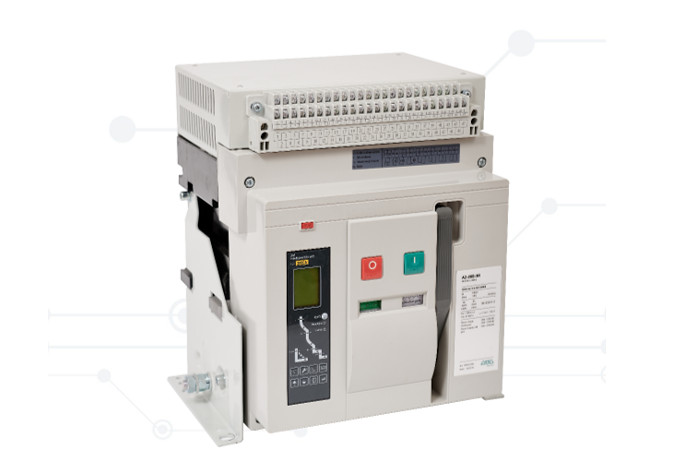
The air circuit breaker has a charging handle located on the front panel, pulling the handle down multiple times will cause the spring to reach a high tension or they will have a hand-winding handle to charge the spring, when the spring is at full tension. maximum tension. mechanically it will release the charging handle so as not to allow you to overcharge the spring. At this point you just press the close button or send a close command and the internal springs release closing the circuit breaker with a very loud bang, I’ve experienced the ground shaking after this loud bang. Rackable air circuit breakers are or are called draw-out types, but some smaller versions do not and will have some sort of locking mechanism. Below is a picture of the medium voltage air circuit breaker and its charging spring mechanical assembly with description of each part, note the charging handle, charging motor and large closing spring.
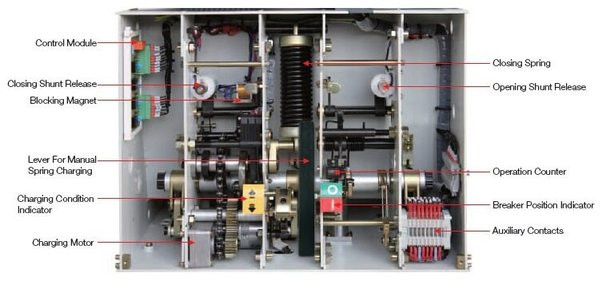
Here’s a picture of an old Square D, 1250A, low voltage air circuit breaker, noting the trip adjustments on the front panel. Newer ACBs can be programmed with trip settings. Underneath, notice the copper tab next to the red breaker, hold the breaker, you can pull out the copper tab and put your padlock on it, this is your locking device.
Here you can see 3 arc chutes used to extinguish the arc of each phase when the circuit breaker is on and off.
